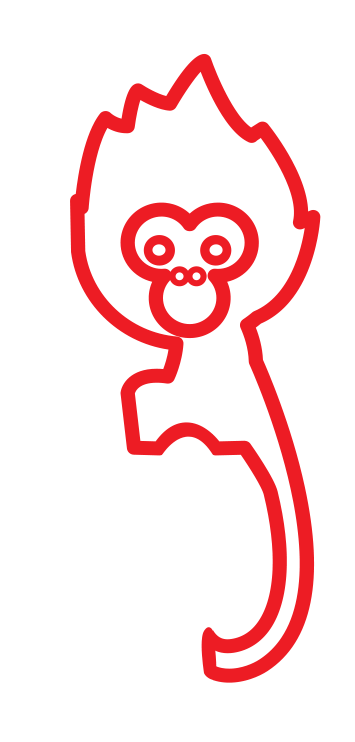
Kayakalp Guidelines for Hospitals: Enhancing Cleanliness and Hygiene
Cleanliness and hygiene in hospitals are very important for everyone’s health. The Kayakalp Guidelines for Hospitals help hospitals maintain high standards of cleanliness and hygiene.
These guidelines ensure a safe and healthy environment for patients, healthcare workers, and visitors. Know the Kayakalp Guidance for Hospitals and how they help in enhancing cleanliness and hygiene.
What are Kayakalp Guidelines for Hospitals?
The Ministry of Health and Family Welfare, Government of India, launched the Kayakalp Guidelines for Hospitals in 2015. These guidelines aim to promote cleanliness, hygiene, and infection control in public health facilities.
They provide a framework for hospitals to follow, ensuring a clean and hygienic environment, which is essential for patient safety and overall healthcare quality.
Key Components of Kayakalp Guidelines for Hospitals
The Guidelines for Kayakalp for Hospitals include several key components, each aimed at improving cleanliness and hygiene. These components are:
1. Sanitation and Hygiene
Sanitation and hygiene are the core of the Kayakalp in Hospitals. This part focuses on keeping all hospital areas, like patient wards, operating rooms, and public spaces, clean and hygienic.
Hospitals must follow regular cleaning schedules, use proper disinfectants, and ensure proper waste disposal.
2. Infection Control
Infection control is crucial to prevent the spread of diseases in hospitals. The Kayakalp Guidance for Hospitals stresses the importance of following strict infection control practices.
This includes hand hygiene, sterilization of medical equipment, and using personal protective equipment (PPE). Hospitals must have protocols for managing infectious diseases and handling outbreaks.
3. Waste Management
Proper waste management is essential for cleanliness and preventing environmental contamination. The guidelines give detailed instructions on segregating, handling, and disposing of different types of waste, including biomedical waste.
Hospitals must dispose of waste according to local regulations and environmental standards.
4. Water, Sanitation, and Hygiene (WASH)
Access to clean water, good sanitation, and hygiene practices are vital for patient safety. The Kayakalp Guidelines for Hospitals outline the requirements for providing safe drinking water and maintaining clean sanitation facilities.
Promoting hand hygiene among patients, staff, and visitors. Hospitals must regularly monitor water quality and ensure that sanitation facilities are functional and hygienic.
Implementing Kayakalp Guidance for Hospitals
Implementing the Kayakalp Guidelines for Hospitals requires a systematic approach. Hospitals must conduct regular assessments to find areas needing improvement and develop action plans to address these issues.
The following steps can help hospitals implement the guidelines effectively:
1. Conducting Baseline Assessments
Hospitals should start by conducting a baseline assessment to evaluate their current cleanliness and hygiene standards. This assessment will help identify gaps and areas that need attention.
Hospitals can use the assessment findings to develop targeted action plans.
2. Training and Capacity Building
Training and capacity building are essential for ensuring hospital staff have the knowledge and skills needed to maintain cleanliness and hygiene. Hospitals should conduct regular training sessions on infection control, waste management, and sanitation practices.
Staff should also be trained in using PPE and hand hygiene techniques.
3. Monitoring and Evaluation
Regular monitoring and evaluation are crucial for ensuring hospitals follow the Kayakalp Guidelines for Hospitals. Hospitals should establish monitoring mechanisms to track progress and identify areas for improvement.
Regular audits and inspections can help ensure compliance with the guidelines.
4. Engaging Stakeholders
Engaging stakeholders, including hospital staff, patients, and the community, is important for successful implementation. Hospitals should involve stakeholders in cleanliness and hygiene initiatives and encourage feedback to identify areas for improvement.
Patient feedback can provide valuable insights into the effectiveness of cleanliness measures.
Best Practices for Maintaining Cleanliness and Hygiene
To effectively follow the Kayakalp Guidelines for Hospitals, healthcare facilities can adopt several best practices. These practices help ensure hospitals maintain high standards of cleanliness and hygiene:
1. Implementing Regular Cleaning Schedules
Essential for maintaining a clean hospital environment. Hospitals should develop and implement cleaning protocols for different areas, including patient rooms, operating theaters, and public spaces.
High-touch surfaces, such as door handles and bed rails, should be cleaned frequently to reduce the risk of infection.
2. Promoting Hand Hygiene
Hand hygiene is one of the most effective ways to prevent the spread of infections. Hospitals should promote hand hygiene among staff, patients, and visitors by providing hand sanitizers and handwashing facilities.
Staff should be trained on proper handwashing techniques and encouraged to practice hand hygiene regularly.
3. Ensuring Proper Waste Disposal
Proper waste disposal is critical for preventing environmental contamination and maintaining cleanliness. Hospitals should segregate waste into different categories, such as biomedical waste, general waste, and hazardous waste.
Waste should be disposed of according to local regulations and environmental standards.
4. Using Appropriate Disinfectants
Using appropriate disinfectants is important for effective cleaning and disinfection. Hospitals should use disinfectants effective against a wide range of pathogens and follow manufacturer instructions for dilution and contact time.
High-touch surfaces should be disinfected regularly to reduce the risk of infection.
5. Maintaining Clean Sanitation Facilities
Clean sanitation facilities are essential for patient safety and overall hygiene. Hospitals should ensure that toilets and washrooms are regularly cleaned and stocked with necessary supplies, such as soap and toilet paper.
Sanitation facilities should be accessible and hygienic for all users.
Benefits of Adhering to Kayakalp Guidelines for Hospitals
Following the Kayakalp Guidelines for Hospitals offers several benefits, including
1. Improved Patient Safety
Maintaining cleanliness and hygiene in hospitals is crucial for patient safety. By following the guidelines, hospitals can reduce the risk of hospital-acquired infections and ensure a safe environment for patients.
This, in turn, improves patient outcomes and overall healthcare quality.
2. Enhanced Patient Experience
A clean and hygienic hospital environment enhances the overall patient experience. Patients are more likely to feel comfortable and confident in a clean hospital setting.
Following the guidelines helps create a positive impression and promotes patient satisfaction.
3. Recognition and Rewards
The Kayakalp Guidelines for Hospitals include a recognition and reward mechanism for healthcare facilities demonstrating excellence in cleanliness and hygiene.
Hospitals that meet the criteria can receive awards and certificates, which serve as a testament to their commitment to maintaining high standards of cleanliness, and hygiene.
4. Compliance with Regulations
Following the guidelines ensures that hospitals comply with local regulations and standards related to cleanliness and hygiene. This helps hospitals avoid legal and regulatory issues and demonstrates their commitment to providing high-quality healthcare services.
Latest Kayakalp Guidelines for Hospitals
The Kayakalp Guidelines 2024 focus on enhancing hospital cleanliness and hygiene. They require regular cleaning, proper waste segregation, and equipment sterilization.
Key measures include effective hand hygiene, infrastructure maintenance, and accessibility. Staff training and internal audits ensure compliance, while patient education on hygiene and waste disposal is also emphasized.
These guidelines aim to create a safe, hygienic environment in hospitals.
Objectives of Kayakalp Guidelines for Hospitals
The main goals of the Guidelines for Kayakalp for Hospitals are to:
- Encourage hospitals to maintain high standards of cleanliness and hygiene.
- Promote infection control practices to reduce hospital-acquired infections (HAIs).
- Improve the overall patient experience by providing a clean and safe environment.
- Recognize and reward healthcare facilities that demonstrate excellence in cleanliness and hygiene.
Conclusion
The Kayakalp Guidelines for Hospitals play a crucial role in enhancing cleanliness and hygiene in healthcare facilities. By following these guidelines, hospitals can create a safe and healthy environment for patients, healthcare workers, and visitors.
Implementing best practices, conducting regular assessments, and engaging stakeholders are essential for maintaining cleanliness and hygiene.
Ultimately, following the Kayakalp Guidelines for Hospitals leads to improved patient safety, enhanced patient experience, and overall healthcare quality.
Frequently Asked Questions (FAQs)
What Are The Kayakalp Guidelines For Hospitals?
The Kayakalp Guidelines for Hospitals are a set of standards and practices designed to promote cleanliness, hygiene, and infection control in healthcare facilities. They aim to create a safe and healthy environment for patients, healthcare workers, and visitors.
Why Are The Kayakalp Guidelines For Hospitals Important?
Guidelines are important because they help ensure high standards of cleanliness and hygiene in hospitals. This reduces the risk of hospital-acquired infections, enhances patient safety, and improves the overall patient experience.
How Can Hospitals Implement The Kayakalp Guidelines?
Hospitals can implement the guidelines by conducting baseline assessments, providing training and capacity building, monitoring and evaluating progress, and engaging stakeholders.
What Are The Benefits Of Following The Kayakalp Guidelines For Hospitals?
Benefits include improved patient safety, enhanced patient experience, recognition and rewards, and compliance with local regulations. Following the guidelines also demonstrates a hospital’s commitment to providing high-quality healthcare services.
How Do The Guidelines Help In Infection Control?
Guidelines emphasize strict infection control practices, such as hand hygiene, sterilization of medical equipment, and using personal protective equipment (PPE). These measures help prevent the spread of infections within healthcare facilities.
Enhance Patient Care and NABH Compliance with LazyMonkey
LazyMonkey is your all-in-one solution for improving patient care, retaining more patients, and meeting NABH standards. Our powerful QR-based feedback tool enables you to capture real-time insights from patient feedback, discharge surveys, staff and doctor evaluations, and clinical research, while also streamlining inter-departmental communication.
Transform your healthcare facility today - reach out to us at hello@lazymonkey.in, or request a demo here!
Elevate Your Restaurant Experience with LazyMonkey
LazyMonkey’s QR-based feedback system helps you gather real-time insights from customers, track satisfaction levels, and enhance the dining experience. Get instant feedback on your menu, service, and ambience, and make data-driven improvements to boost repeat customers and reviews.
Improve your restaurant today – reach out to us at hello@lazymonkey.in, or request a demo here!
Empower Student Engagement and Campus Improvement with LazyMonkey
LazyMonkey offers a seamless way to gather student feedback, track satisfaction, and enhance campus life. From course evaluations to dorm feedback, our QR-based solution makes it easy to capture valuable insights and improve student retention.
Upgrade your university experience – contact us at hello@lazymonkey.in, or request a demo here!
Streamline Feedback and Drive Performance Across Your Enterprise/Franchise with LazyMonkey
Whether you manage one or multiple locations, LazyMonkey’s QR-based feedback system helps you gather real-time employee and customer feedback. Improve operational efficiency, track satisfaction, and make data-driven decisions to enhance brand consistency and growth.
Transform your franchise today – reach out to us at hello@lazymonkey.in, or request a demo here!
Enhance Customer Satisfaction and Service Standards in Banking with LazyMonkey
LazyMonkey empowers banks to capture real-time feedback from clients across branches. Improve customer experience, assess service quality, and ensure regulatory compliance with our QR-based solution, helping you retain clients and meet banking standards.
Elevate your bank’s customer care – contact us at hello@lazymonkey.in, or request a demo here!
Boost Customer Engagement and Mall Satisfaction with LazyMonkey
LazyMonkey’s QR-based feedback tool enables you to collect feedback from shoppers, track satisfaction, and enhance the mall experience. Gather insights on store services, cleanliness, and entertainment to create an unmatched customer journey.














